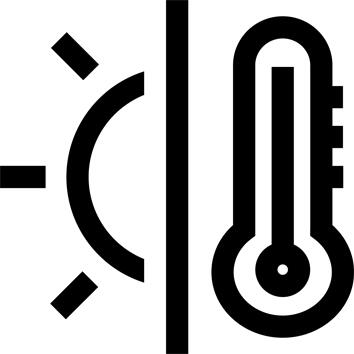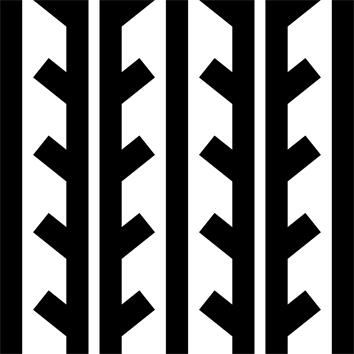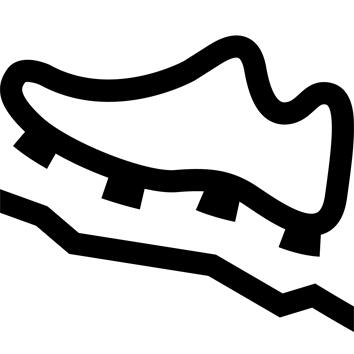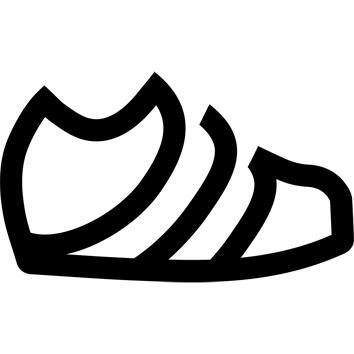A shoe inspired by nature: the lynx, the snow cat.
In the wild, animals are naturally equipped to adapt to the conditions of their living environment: feathers and fur trap air to insulate them from the cold or heat, paws adapted to move over diverse, demanding and changing terrain... The Lynx, the true king of the snow, inspired us to design your footwear: wide, protected paws insulated from the cold, and special pads for easy movement and agility on the snow.
Am I sure my shoes are warm enough for winter hiking?
We chose an ultra-warm lining and a large, insulating volume to protect you from the cold.
We tested it in the laboratory and in the field with representative users. We checked how comfortable it stays when you're standing still and when you're walking, because it varies a lot: -10°c statically and -19°C dynamically. And we took into account the differences in feel between men and women.
How do my shoes protect me from the elements?
Your shoes have been designed with leather and a membrane to ensure waterproofing and breathability. A membrane is a very thin component (from 5 to 25 micrometers) applied to the inside of a fabric that prevents water from entering and allows moisture to evacuate. Their high upper with elastic gaiter provides protection against cold and snow, while the midsole insulates you perfectly. Your feet will be well protected, warm and dry.
How can I be sure that my shoes are 100% waterproof?
We've made sure that your shoes are waterproof with laboratory tests simulating walking with feet half-submerged in water, and with wear and ageing tests in the field. In the waterproof test, we test 3 levels of waterproofness: 2000 flexions (approx. 4 km walking), 4000 flexions (approx. 8 km walking) and 8000 flexions (approx. 16 km walking). Your shoe model has been tested up to 4,000 flexes, equivalent to 8 km of walking.
Breathable footwear for optimum thermal comfort
Thermal comfort is a balance between the warmth provided by the footwear and its ability to let the foot breathe. Too much warmth or not enough breathability, moisture accumulates and the cold can set in. We've designed your shoes with your regular and sometimes intense running in mind, with a membrane whose role is to keep water out on one side and allow moisture to escape on the other.
What's the difference between grip and adhesion?
Shoe grip depends on the number and shape of studs. Grip, on the other hand, depends on the materials and treads used on your soles, much like the tires on your car. Grip optimizes propulsion, prevents the shoe from skidding backwards when climbing and stabilizes the shoe.
Grip prevents the shoe from slipping and skidding on smooth terrain or in demanding conditions (rain, snow, ice), by providing the sole with grip.
What kind of grip does this shoe give me?
Equipped with SNOWCONTACT soles, your boots have been designed for maximum comfort in terms of grip for hiking and grip on snow. The layout and height of the crampons (5mm) are inspired by the feet of the lynx and are strategically placed for optimum grip when hiking on snow with gradients. The surface and design of the crampons have been worked to perfectly match the hard snow layer and evacuate excess water to prevent slipping.
What does SNOWCONTACT technology on the soles of my shoes do for me?
SNOWCONTACT soles are designed with a specific component and crampon design to ensure the best possible grip and hold. SNOWCONTACT soles are also more effective than traditional soles on snow. For use on ice, only the addition of anti-slip grips will ensure optimum safety.
Why is it important to be well supported in a hiking boot?
The fit of your shoes is essential for your walking comfort. In fact, a good fit optimizes your stride on ascents and descents, prevents your foot from slipping in the shoe and limits the appearance of blisters. There is less loss in the transmission of your energy to the shoe, and therefore less fatigue. This is all the more important when walking on snowshoes.
Will my shoes stand up to regular use over time?
Our engineers conduct laboratory tests to guarantee your complete satisfaction in use. We validate the following elements, among others: eyelet and strap resistance, bonding, toxicology, UV resistance, abrasion of sole and upper components, accelerated aging.
Why choose a leather hiking boot?
Leather is ultra-comfortable, resistant (a natural material) and supple for added comfort.
This material is naturally waterproof and breathable.
Warm in winter and cool in mid-season, leather naturally thermo-regulates the shoe.
We recommend brushing your shoes well (with a soft brush) to maintain them and optimize their longevity.
How do I get the right footwear for hiking on snow?
To get the best outfitting for winter, we recommend the following principles:
Warmth: warm socks (ideally with a suitable % wool)
Breathability: choose socks according to the intensity of the hike, and in particular choose breathable models to limit humidity.
Shaft height: adapt the height of the sock to the height of the shaft, and prefer high models if you're looking for more protection.
How can I preserve the technical qualities of my shoes?
A fabric's water repellency is its ability to let water slide off its surface without absorbing it. As a result, the fabric doesn't become waterlogged, remaining light, breathable and warm. Water repellency is achieved by a treatment applied to the outside of the fabric. This treatment needs to be renewed over the life of the garment. Products (spray or liquid) are available for this purpose in our stores.
How do I dry the inside of my shoe?
Shoes in use can become very damp (condensation and perspiration).
If the shoe is very damp, we recommend removing the insole, filling the upper with newspaper balls and changing them regularly. The paper will pump out the moisture and speed up the drying process.
Never put your shoes too close to a heat source, but leave them in a warm, dry, well-ventilated place.
Weight
39 : 1.16 kg
40 : 1.25 kg
41 : 1.212 kg
44 : 1.382 kg





